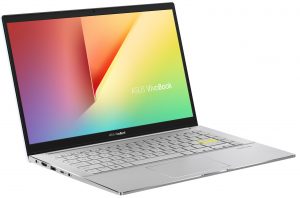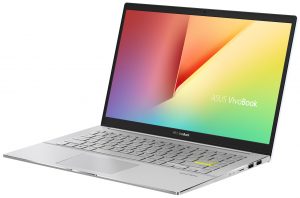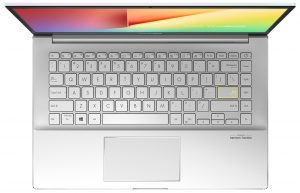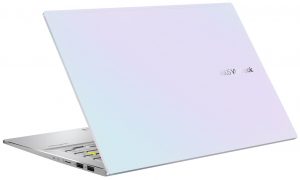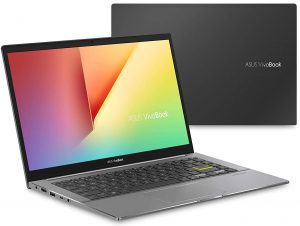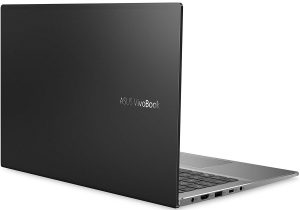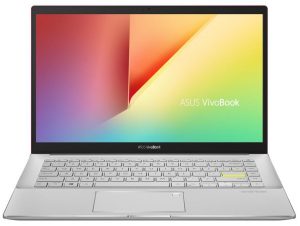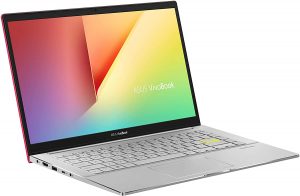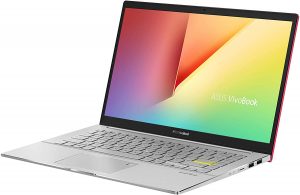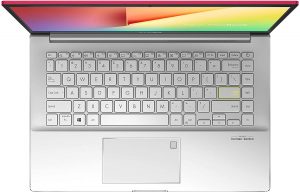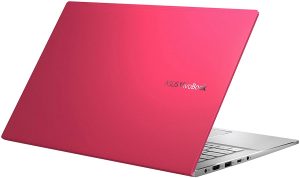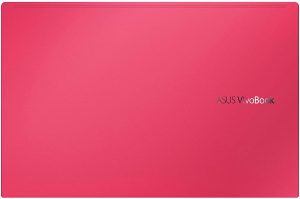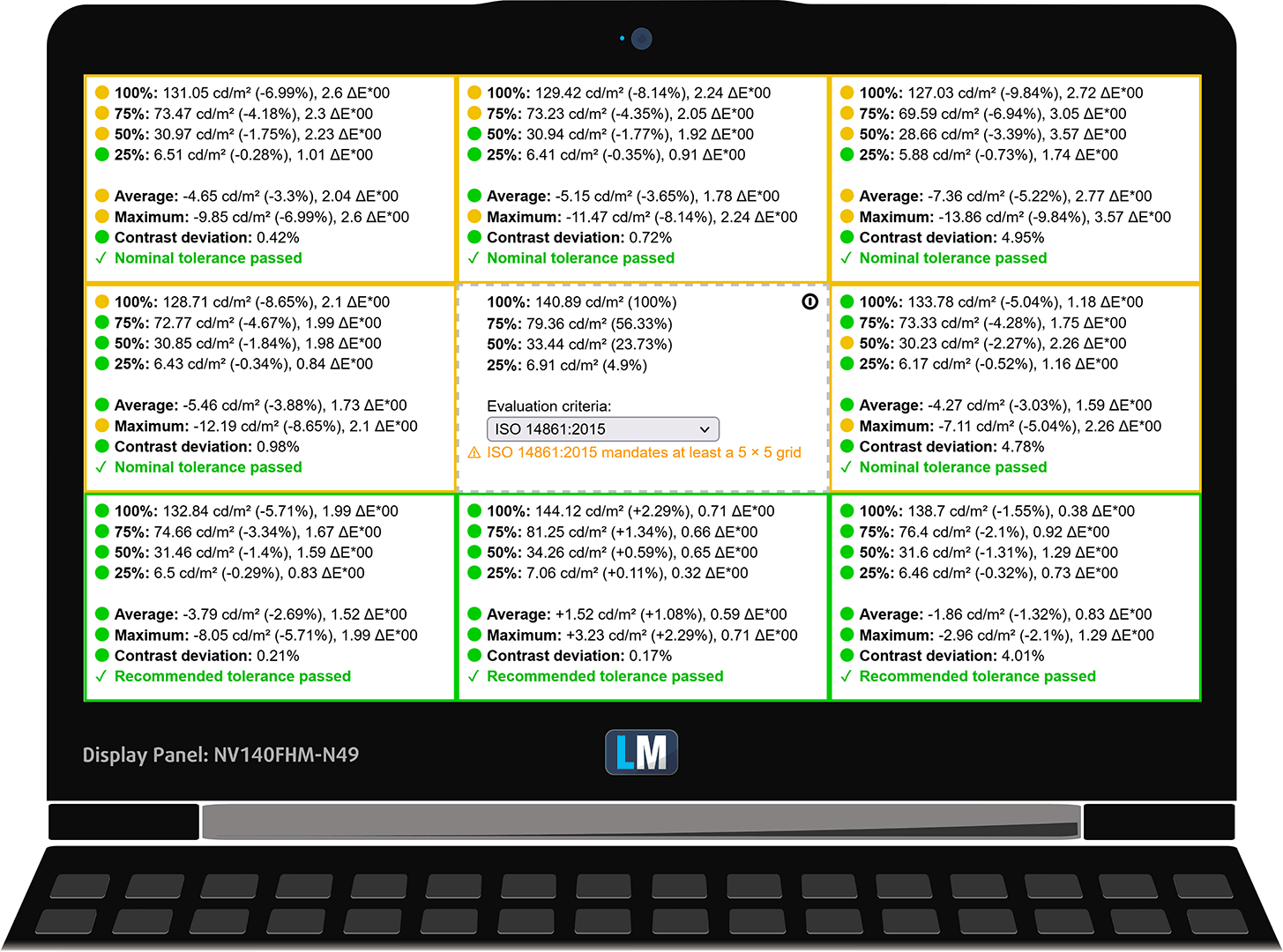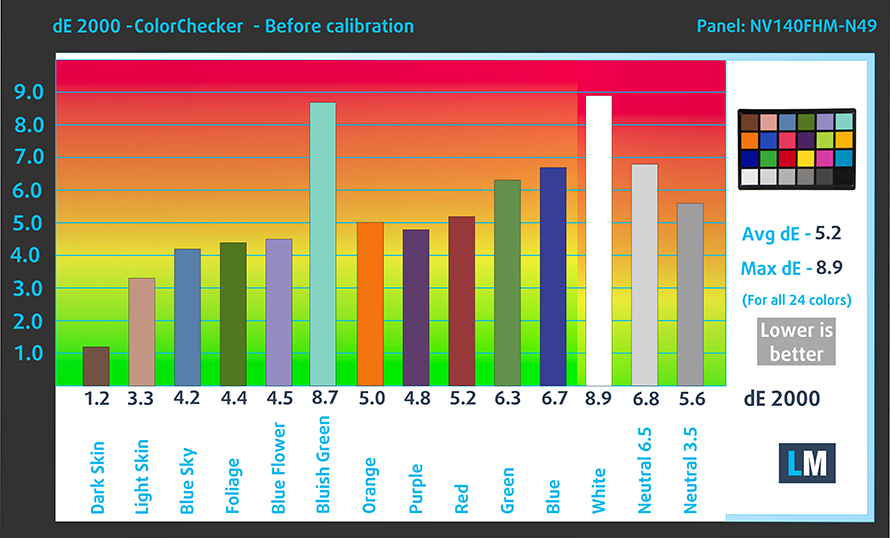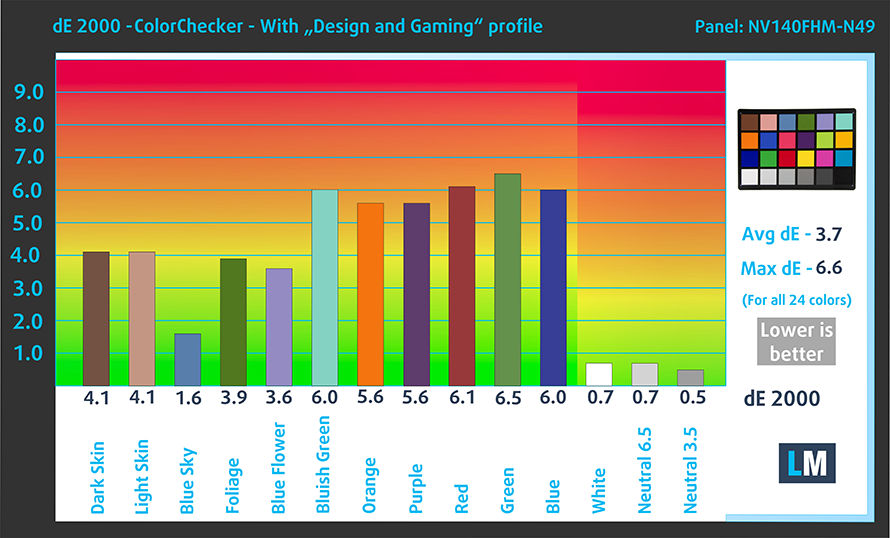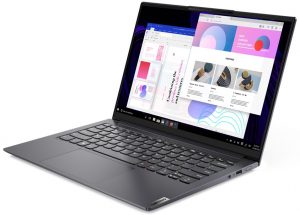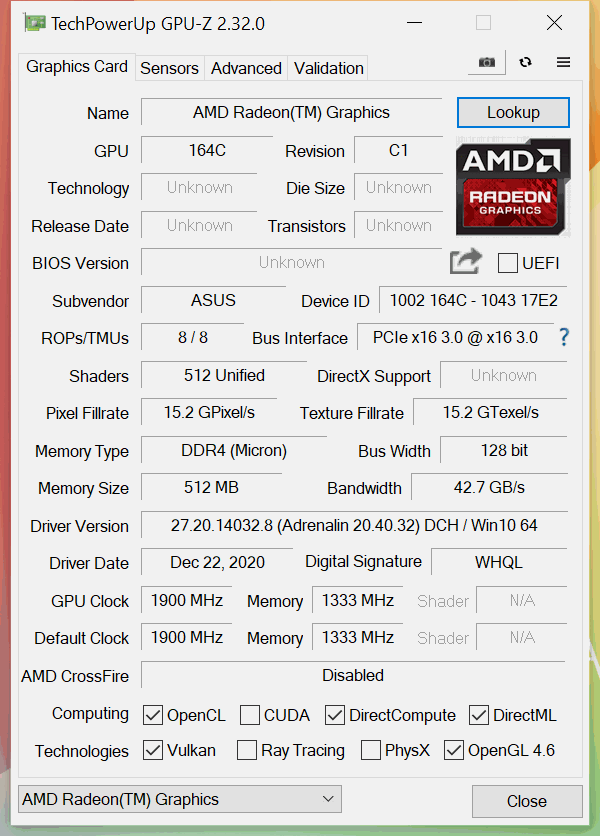ASUS VivoBook S14 M433 review – an update with Ryzen 5000U processors inside
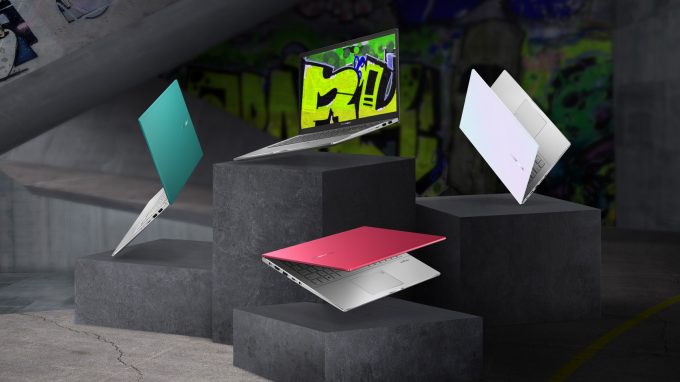 Today we have something that’s not entirely new. The VivoBook S14 comes in a lot of different configurations. Previously, we’ve checked out the S14 S433, which was equipped with a Comet Lake-U processor. Now, we have the S14 M433 – an AMD-based device, featuring the latest Ryzen 5000U CPUs, albeit still built on the Zen 2 architecture.
Today we have something that’s not entirely new. The VivoBook S14 comes in a lot of different configurations. Previously, we’ve checked out the S14 S433, which was equipped with a Comet Lake-U processor. Now, we have the S14 M433 – an AMD-based device, featuring the latest Ryzen 5000U CPUs, albeit still built on the Zen 2 architecture.
Ultimately, you can view the machine as a refresh. This means it keeps all of the features like the NumberPad touchpad, highlighted Enter key, backlit keyboard, and of course – choice of colors for the chassis. We are glad that ASUS has decided to keep that as well since it is one of the best ways to personalize your notebook.
By the way, being paired with a Ryzen 5 5500U, or a Ryzen 7 5700U should be the key selling point here. It will bring a desktop-like performance in the form of a notebook.
You can check the prices and configurations in our Specs System: https://laptopmedia.com/series/asus-vivobook-s14-s433/
Contents
Specs Sheet
- CPU
- Intel Core i7-1165G7 #195 in Top CPUs Intel Core i5-1135G7 #197 in Top CPUs Intel Core i5-1035G1 #211 in Top CPUs Intel Core i5-10210U #223 in Top CPUs AMD Ryzen 7 5700U #144 in Top CPUs AMD Ryzen 7 4700U #171 in Top CPUs AMD Ryzen 5 5500U #173 in Top CPUsIntel Core i7-1065G7 Intel Core i7-10510U AMD Ryzen 5 4500U
- GPU
- NVIDIA GeForce MX350 (25W) #229 in Top GPUs NVIDIA GeForce MX350 #228 in Top GPUs NVIDIA GeForce MX250 (25W) #233 in Top GPUs Intel UHD Graphics #263 in Top GPUs Intel Iris Xe Graphics G7 (96EU) #226 in Top GPUs Intel Iris Xe Graphics G7 (80EU) #234 in Top GPUs Intel Iris Plus Graphics G7 #257 in Top GPUs AMD Radeon RX Vega 8 (R4000/5000, 15W) #232 in Top GPUs AMD Radeon RX Vega 7 (R4000/5000, 15W) #242 in Top GPUs AMD Radeon RX Vega 6 (R4000/5000, 15W) #251 in Top GPUs
- HDD/SSD
- up to 1032GB SSD
- M.2 Slot
- 2x 2280 PCIe NVMe 3.0 x2 See photo
- RAM
- up to 16GB
- OS
- Windows 10 Home, Windows 11 Home, Windows 10 Pro, No OS
- Battery
- 50Wh, 3-cell, 42Wh, 3-cell
- Body material
- Plastic / Polycarbonate, Aluminum
- Dimensions
- 324 x 213 x 15.9 mm (12.76" x 8.39" x 0.63")
- Weight
- 1.40 kg (3.1 lbs)
- Ports and connectivity
- 2x USB Type-A
- 2.0
- 1x USB Type-A
- 3.2 Gen 1 (5 Gbps)
- 1x USB Type-C
- 3.2 Gen 1 (5 Gbps)
- HDMI
- 1.4
- Card reader
- MicroSD
- Ethernet LAN
- Wi-Fi
- 802.11ax
- Bluetooth
- 5.0
- Audio jack
- 3.5 mm combo
- Features
- Fingerprint reader
- optional
- Web camera
- HD
- Backlit keyboard
- optional
- Microphone
- Array Microphone
- Speakers
- Speakers by Harman Kardon
- Optical drive
- Security Lock slot
All ASUS VivoBook S14 S433 (M433) configurations
Design, construction, and disassembly
Since we’ve already checked the VivoBook S14 in another review, you can take an in-depth look at the appearance of this device HERE.
Display quality
ASUS VivoBook S14 M433 features a Full HD IPS screen, model number BOE NV140FHM-N49 (BOE07E7). Its diagonal is 14″ (35.56 cm), and the resolution – 1920 х 1080. Additionally, the screen ratio is 16:9, the pixel density – 157 ppi, their pitch – 0.161 x 0.161 mm. The screen can be considered Retina when viewed from at least 56 cm (from this distance, the average human eye can’t see the individual pixels).
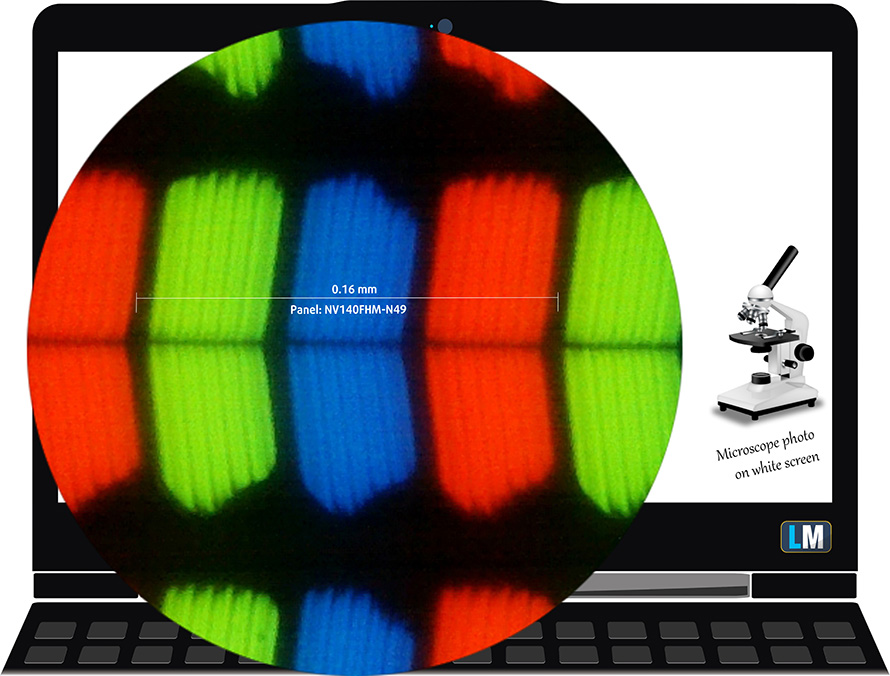
It has comfortable viewing angles. We have provided images at 45 degrees to evaluate quality.

The maximum measured brightness is 295 nits (cd/m2) in the middle of the screen and 284 nits (cd/m2) average across the surface with a maximum deviation of 9%. The Correlated Color Temperature on a white screen and at maximum brightness is 7200K (average) – colder than the 6500K optimum for sRGB.
In the illustration below you can see how the display performs from a uniformity perspective. The illustration below shows how matters are for operational brightness levels (approximately 140 nits) – in this particular case at 58% Brightness (White level = 141 cd/m2, Black level = 0.11 cd/m2).
Values of dE2000 over 4.0 should not occur, and this parameter is one of the first you should check if you intend to use the laptop for color-sensitive work (a maximum tolerance of 2.0 ). The contrast ratio is good – 1250:1.
To make sure we are on the same page, we would like to give you a little introduction to the sRGB color gamut and the Adobe RGB. To start, there’s the CIE 1976 Uniform Chromaticity Diagram that represents the visible specter of colors by the human eye, giving you a better perception of the color gamut coverage and the color accuracy.
Inside the black triangle, you will see the standard color gamut (sRGB) that is being used by millions of people on HDTV and on the web. As for the Adobe RGB, this is used in professional cameras, monitors, etc for printing. Basically, colors inside the black triangle are used by everyone and this is the essential part of the color quality and color accuracy of a mainstream notebook.
Still, we’ve included other color spaces like the famous DCI-P3 standard used by movie studios, as well as the digital UHD Rec.2020 standard. Rec.2020, however, is still a thing of the future and it’s difficult for today’s displays to cover that well. We’ve also included the so-called Michael Pointer gamut, or Pointer’s gamut, which represents the colors that naturally occur around us every day.
The yellow dotted line shows ASUS VivoBook S14 M433’s color gamut coverage.
Its display covers only 52% of the sRGB/ITU-R BT.709 (web/HDTV standard) in CIE1976.
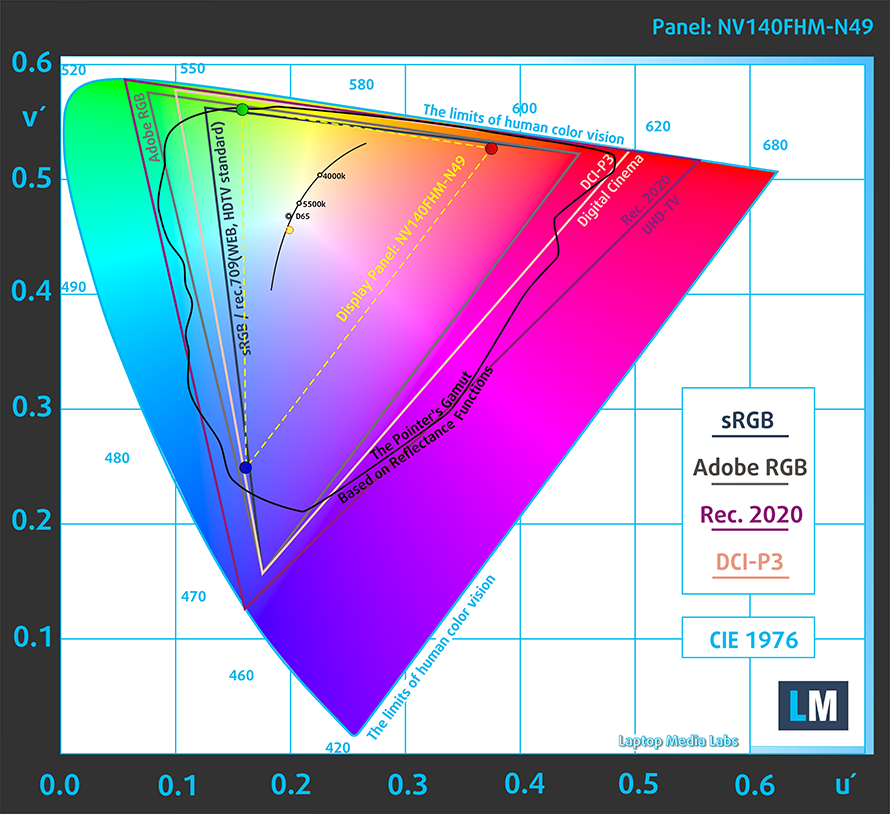
Our “Design and Gaming” profile delivers optimal color temperature (6500K) at 140 cd/m2 luminance and sRGB gamma mode.
We tested the accuracy of the display with 24 commonly used colors like light and dark human skin, blue sky, green grass, orange, etc. You can check out the results at factory condition and also, with the “Design and Gaming” profile.
Below you can compare the scores of ASUS VivoBook S14 M433 with the default settings (left), and with the “Gaming and Web design” profile (right).
The next figure shows how well the display is able to reproduce really dark parts of an image, which is essential when watching movies or playing games in low ambient light.
The left side of the image represents the display with stock settings, while the right one is with the “Gaming and Web Design” profile activated. On the horizontal axis, you will find the grayscale, and on the vertical axis – the luminance of the display. On the two graphs below you can easily check for yourself how your display handles the darkest nuances but keep in mind that this also depends on the settings of your current display, the calibration, the viewing angle, and the surrounding light conditions.
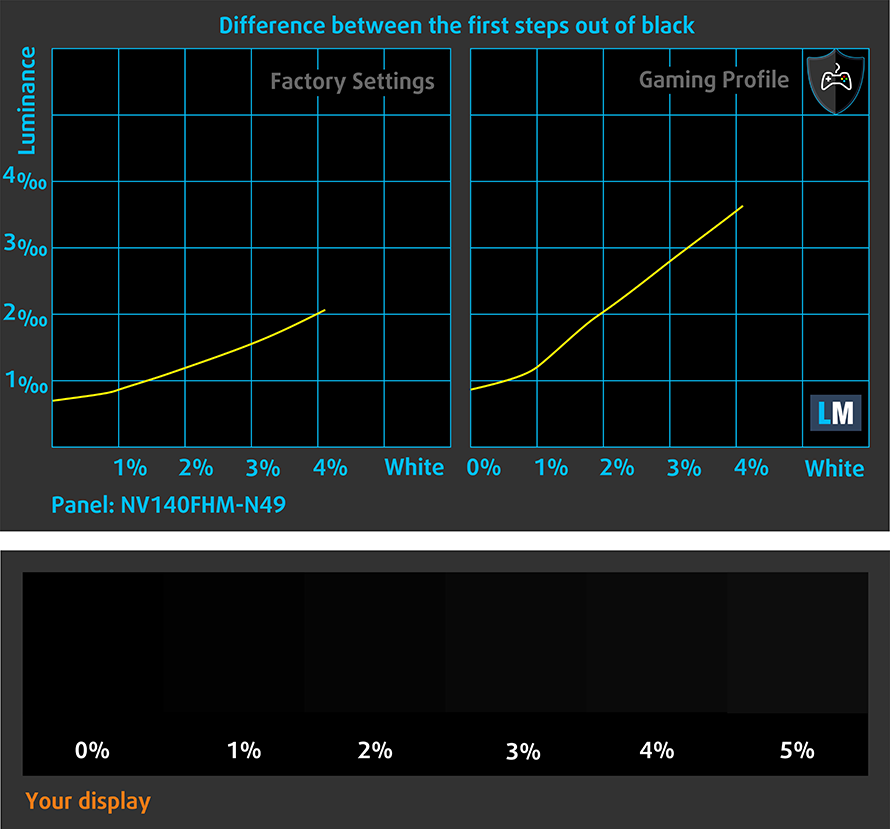
Response time (Gaming capabilities)
We test the reaction time of the pixels with the usual “black-to-white” and “white-to-black” method from 10% to 90% and vice versa.
We recorded Fall Time + Rise Time = 28 ms.
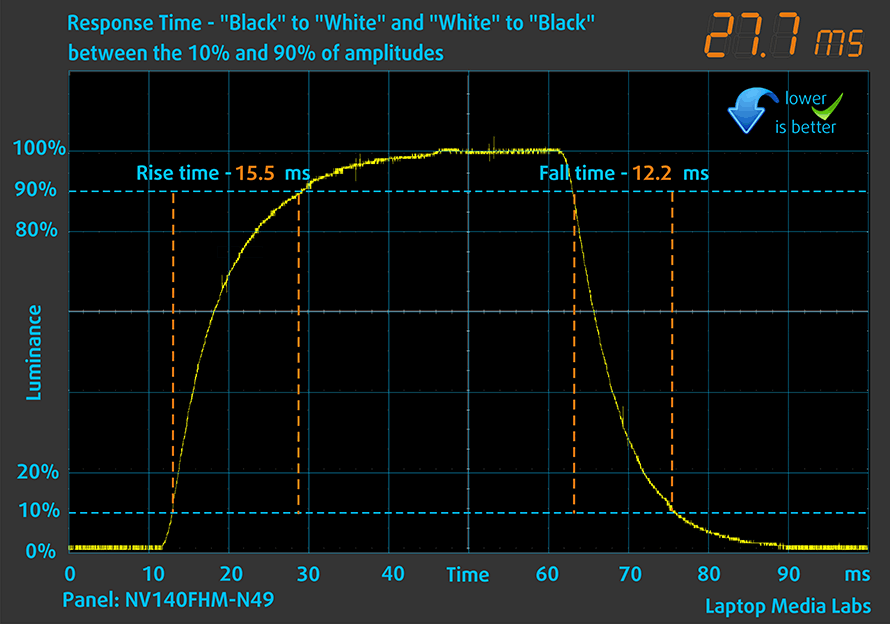
Health impact – PWM / Blue Light
PWM (Screen flickering)
Pulse-width modulation (PWM) is an easy way to control monitor brightness. When you lower the brightness, the light intensity of the backlight is not lowered, but instead turned off and on by the electronics with a frequency indistinguishable to the human eye. In these light impulses, the light/no-light time ratio varies, while brightness remains unchanged, which is harmful to your eyes. You can read more about that in our dedicated article on PWM.
ASUS VivoBook S14 M433’s display does not use PWM, whatsoever. This makes it comfortable to use for extended periods of time.
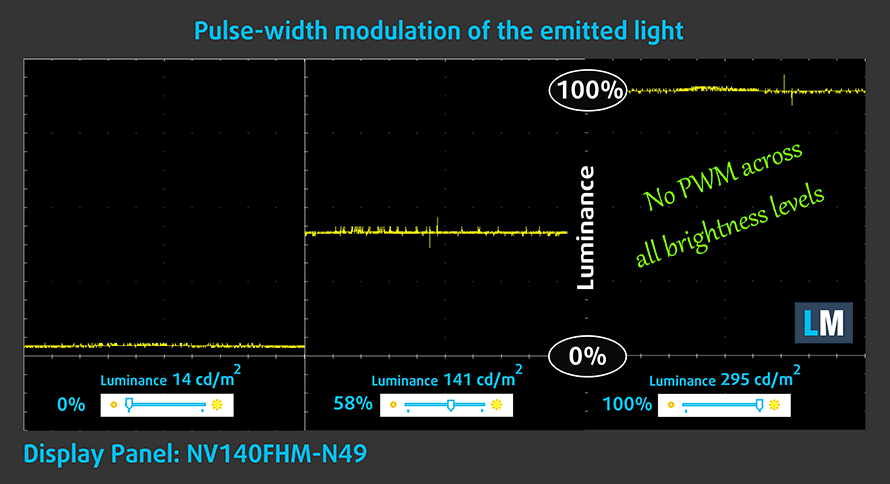
Blue light emissions
Installing our Health-Guard profile not only eliminates PWM but also reduces the harmful Blue Light emissions while keeping the colors of the screen perceptually accurate. If you’re not familiar with the Blue light, the TL;DR version is – emissions that negatively affect your eyes, skin, and your whole body. You can find more information about that in our dedicated article on Blue Light.
Buy our profiles
Since our profiles are tailored for each individual display model, this article and its respective profile package are meant for ASUS VivoBook S14 M433 configurations with 14.0″ BOE NV140FHM-N49 (FHD, 1920 × 1080) IPS.
*Should you have problems with downloading the purchased file, try using a different browser to open the link you’ll receive via e-mail. If the download target is a .php file instead of an archive, change the file extension to .zip or contact us at [email protected].
Read more about the profiles HERE.
In addition to receiving efficient and health-friendly profiles, by buying LaptopMedia's products you also support the development of our labs, where we test devices in order to produce the most objective reviews possible.

Office Work
Office Work should be used mostly by users who spend most of the time looking at pieces of text, tables or just surfing. This profile aims to deliver better distinctness and clarity by keeping a flat gamma curve (2.20), native color temperature and perceptually accurate colors.

Design and Gaming
This profile is aimed at designers who work with colors professionally, and for games and movies as well. Design and Gaming takes display panels to their limits, making them as accurate as possible in the sRGB IEC61966-2-1 standard for Web and HDTV, at white point D65.

Health-Guard
Health-Guard eliminates the harmful Pulse-Width Modulation (PWM) and reduces the negative Blue Light which affects our eyes and body. Since it’s custom tailored for every panel, it manages to keep the colors perceptually accurate. Health-Guard simulates paper so the pressure on the eyes is greatly reduced.
Get all 3 profiles with 33% discount
Sound
ASUS VivoBook S14 M433’s Harman Kardon speakers produce a decent and dynamic sound. Its low, mid, and high tones are clear of deviations.
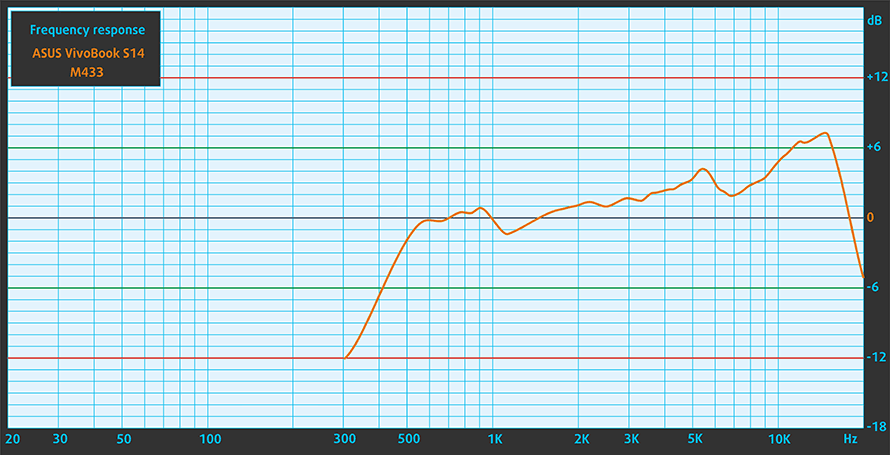
Drivers
All of the drivers and utilities for this notebook can be found here: https://www.asus.com/Laptops/For-Home/VivoBook/VivoBook-S14-M433-AMD-Ryzen-5000-Series/HelpDesk_knowledge/?model2Name=VivoBook-S14-M433-AMD-Ryzen-5000-Series
Battery
Now, we conduct the battery tests with Windows Better performance setting turned on, screen brightness adjusted to 120 nits, and all other programs turned off except for the one we are testing the notebook with. This laptop’s 50Wh battery pack lasts for 8 hours and 38 minutes of Web browsing, and 9 hours and 45 minutes of video playback.
In order to simulate real-life conditions, we used our own script for automatic web browsing through over 70 websites.

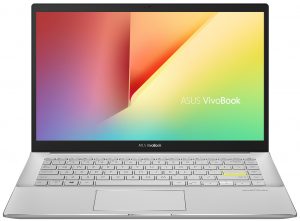
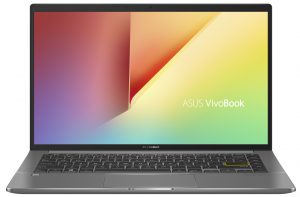
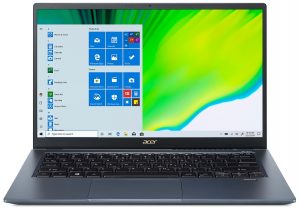
For every test like this, we use the same video in HD.




CPU options
This notebook can be purchased with either the Ryzen 5 5500U or the Ryzen 7 5700U. Respectively a six, and an eight-core processor, both of which are paired with multithreading.
Results are from the Cinebench R23 CPU test (the higher the score, the better)
Results are from our Photoshop benchmark test (the lower the score, the better)
GPU options
As for the graphics, there is the integrated Radeon RX Vega 7 and 8.
Results are from the 3DMark: Time Spy (Graphics) benchmark (higher the score, the better)
Results are from the 3DMark: Fire Strike (Graphics) benchmark (higher the score, the better)
Results are from the Unigine Superposition benchmark (higher the score, the better)
Gaming tests

| CS:GO | HD 1080p, Low (Check settings) | HD 1080p, Medium (Check settings) | HD 1080p, MAX (Check settings) |
|---|---|---|---|
| Average FPS | 112 fps | 83 fps | 57 fps |

| DOTA 2 | HD 1080p, Low (Check settings) | HD 1080p, Normal (Check settings) | HD 1080p, High (Check settings) |
|---|---|---|---|
| Average FPS | 109 fps | 72 fps | 43 fps |
Temperatures and comfort
Max CPU load
In this test we use 100% on the CPU cores, monitoring their frequencies and chip temperature. The first column shows a computer’s reaction to a short load (2-10 seconds), the second column simulates a serious task (between 15 and 30 seconds), and the third column is a good indicator of how good the laptop is for long loads such as video rendering.
Average core frequency (base frequency + X); CPU temp.
| AMD Ryzen 7 5700U (15W TDP) | 0:02 – 0:10 sec | 0:15 – 0:30 sec | 10:00 – 15:00 min |
|---|---|---|---|
| ASUS VivoBook S14 M433 | 3.03 GHz (B+74%) @ 75°C | 2.94 GHz (B+63%) @ 93°C | 2.75 GHz (B+53%) @ 95°C |
During the extreme workload simulation, the VivoBook S14 M433 manages to maintain high frequencies even in the end. However, the temperatures were getting pretty scorchy.
Comfort during full load
On the bright side, the laptop doesn’t become too loud during extreme workloads. However, its keyboard gets pretty warm.
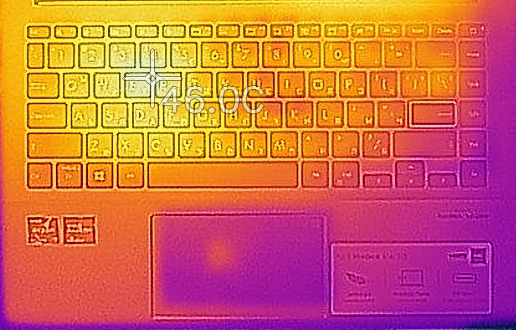
Verdict
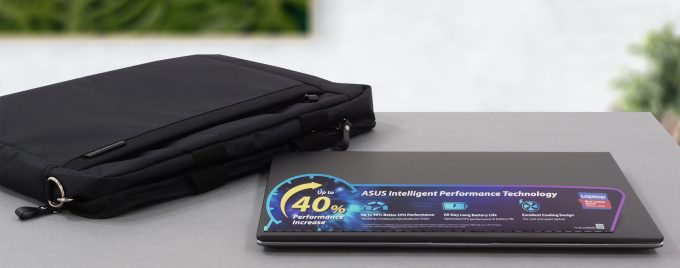 Unsurprisingly, this laptop shares the same disadvantages as the VivoBook S14 S433. It has poor upgradability, its I/O is nothing spectacular, and it doesn’t support Thunderbolt because of its chipset.
Unsurprisingly, this laptop shares the same disadvantages as the VivoBook S14 S433. It has poor upgradability, its I/O is nothing spectacular, and it doesn’t support Thunderbolt because of its chipset.
However, it has a decent battery life with 8 hours and 38 minutes of Web browsing, and 9 hours and 45 minutes of video playback. Its customization options are great thanks to the different color choices upon purchase, and our unit came with a carrying bag inside the box.
ASUS VivoBook S14 M433’s IPS panel has a Full HD resolution, good contrast ratio, and comfortable viewing angles. Thankfully, its backlight doesn’t use PWM for brightness adjustment. Ultimately, it has only one disadvantage, and it is the narrow color coverage of only 52% of the sRGB gamut.
At the end of the day, all this laptop is about is performance. And it definitely delivers. While in the graphics department, it is bested by the new Tiger Lake chips, its computational power is immense. If a time traveler from 2015 comes and sees where mobile computing has come, they will be baffled. The Ryzen 7 5700U can even trade blows with the Core i9-9980HK from a couple of years ago. Of course, it is slower on most occasions, but it is far more energy-efficient, and you don’t need a bulky device to extract the most out of it.
The question is, should you invest in this device. Well, there are other laptops that offer the same if not higher performance. And moreover, they have a better I/O selection. However, considering the price of this tiny notebook, it can be a very good choice for day-to-day work that requires the occasional need for more performance. And yes, it is significantly better than the VivoBook S14 S433 we tested last year (well, at least in terms of power).
You can check the prices and configurations in our Specs System: https://laptopmedia.com/series/asus-vivobook-s14-s433/
Pros
- Stylish customizable design
- Nice performance/efficiency ratio
- Good battery life
- Very powerful CPUs
- Doesn’t use PWM to adjust its brightness (BOE NV140FHM-N49)
- MicroSD card reader on board
Cons
- Poor upgradability
- Lacks Thunderbolt connection
- Covers only 52% of sRGB (BOE NV140FHM-N49)
- Modest I/O

